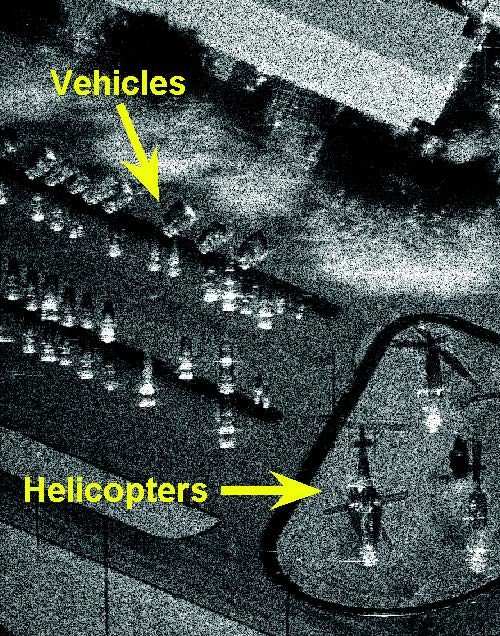The User Productivity Enhancement and Technology Transfer (PET) pro-gram within the U.S. Department of Defense’s High Performance Computing Modernization Program (HPCMP) ensures DoD researchers make the best use of the military’s computing capacity. PET gathers and deploys the best ideas, algorithms, and software tools emerging from the national supercomputing infrastructure by contracting with academic leaders, including the Ohio Supercomputer Center.
OSC leads projects in Signal & Image Processing (SIP) and Integrated Modeling and Test Environments (IMT). SIP provides the extraction and analysis of key information of sensors, signal intelligence, and navigation assets, while IMT deals with the collection, storage, processing, and analysis of test data, and models for verifying, synthesizing, directing, and understanding test results.
OSC researchers are addressing needs that include improved algorithms for signal/phenomena exploitation, enhanced means of data transmission and storage, use of life-cycle software development tools, increased use of commercial off-the-shelf tools, and comprehensive and persistent training.
OSC also manages the overall PET program for the MOS consortium, one of two prime contractors for the PET program, which includes Mississippi State University, the Ohio Supercomputer Center, Science Applications International Corporation, Computer Sciences Corporation, University of Tennessee at Knoxville, University of Alabama at Birmingham, University of Texas at Austin, and the University of Hawaii. OSC staff members provide strategic oversight as well as daily management for this $13 million per year contract.
Surveillance of the ground by air- and space-borne sensors has proven to be essential to military and intelligence organizations. Specifically, the U.S. Department of Defense’s 2006 Quadrennial Defense Review highlights the need for “a highly persistent capability to identify and track moving ground targets in denied areas.”
Of all the sensing technologies available, ground moving-target indication (GMTI) radar has important advantages because of features such as day/night/all-weather operation and foliage, obscurants, smoke, and dust penetration. But GMTI radar data from targets also includes echoes from ground clutter, and the radar motion strongly degrades the performance of target detection for a conventional moving target.
Space-time adaptive processing (STAP) is a signal- and image-processing technique that compensates for the radar’s platform motion. Engineers must carefully develop and efficiently implement the robust STAP algorithms, as the technique’s high-dimensional vectors and matrices render it computationally intensive.
To improve efficiency, Ohio Supercomputer Center experts developed technology for DoD researchers that simplifies developing complicated algorithms such as STAP and significantly reduces the simulation times by connecting to and interacting with a supercomputer – while still using MATLAB software or related applications designed for basic desktop computers. (See a related story on SSHToolbox on page 29.)
“On my PC, it took almost 246 hours to complete a STAP simulation with 128 thresholds. On the ARL MSRC (Army Research Laboratory MSRC) system, it took 7 hours, which is 35 times faster. This is a tremendous improvement!” said Freeman Lin, Ph.D., Air Force Research Laboratory Sensors Directorate’s Electromagnetic Scattering Branch, based at Hanscomb AFB, Massachusetts.
--
Lead Researcher:
Juan Carlos Chaves, Ph.D. Ohio Supercomputer Center
OSC Project Team:
• Stan Ahalt, Ph.D.
• Ashok Krishnamurthy, Ph. D.
• Alan Chalker, Ph.D.
• John Nehrbass, Ph.D.
Research Title:
Detection of Moving Targets in Heterogeneous Radar Clutter Scenarios
Funding Source:
U.S. Department of Defense, High Performance Computing Modernization Program User Productivity Enhancement and Technology Transfer (HPCMP PET)
For more information:
